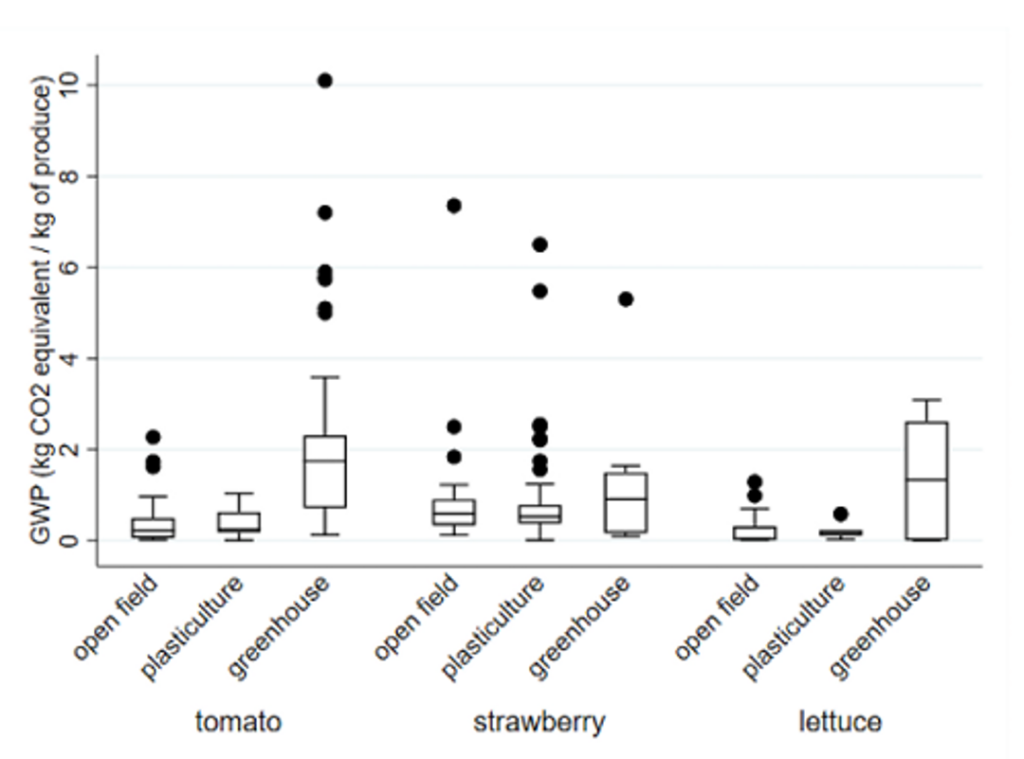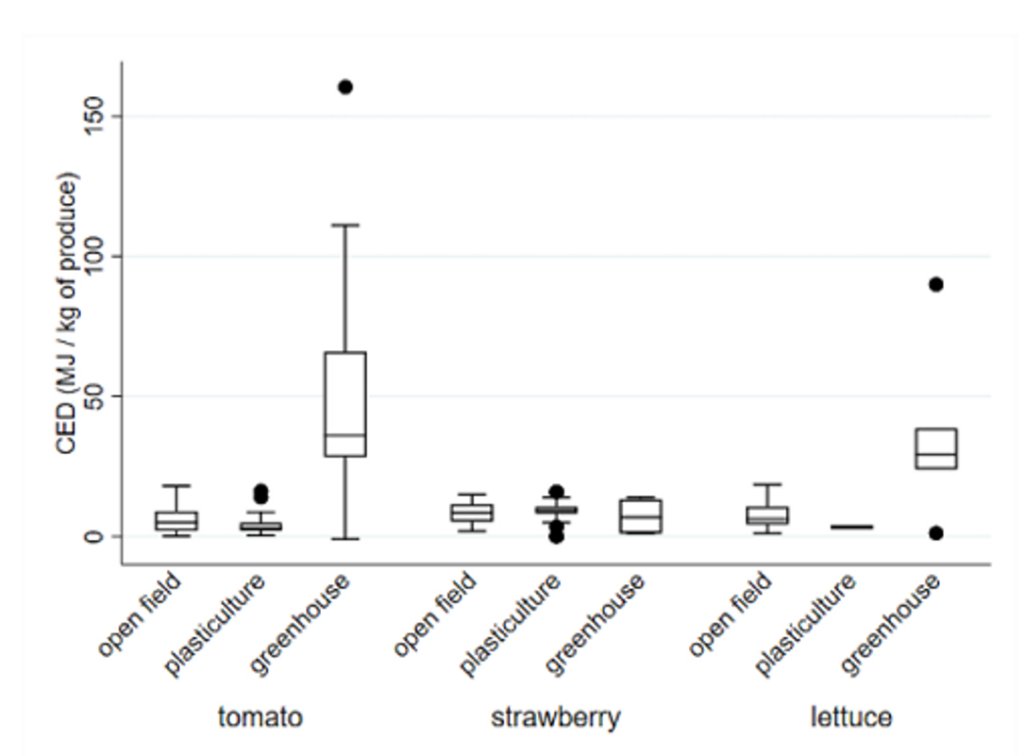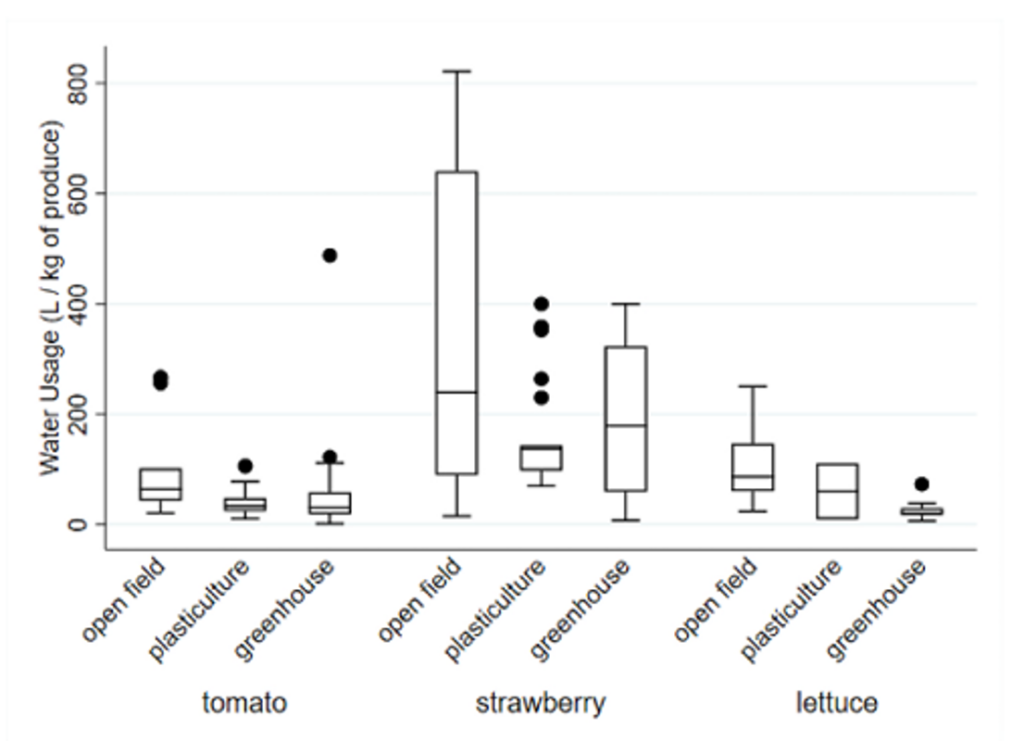Dr. Neil Mattson (Cornell University Professor of the School of Integrative Plant Science and GLASE Principal Investigator) contributed to a global meta-analysis of 97 studies from 2000 to 2022. The study concluded that yield is higher and water use is lower for controlled environment agriculture (CEA) than field production, but energy use and global warming potential is higher for CEA systems. Four key performance indicators were used to measure and compare the environmental performance of tomato, lettuce, and strawberry production:
- Yield per unit land area,
- Cumulative energy demand (CED),
- Greenhouse gas emissions (GHG), expressed as global warming potential (GWP), and
- Water usage between CEA and other production systems.
Four production systems were analyzed: open field, plasticulture, greenhouse, and vertical farm. A functional unit of product was defined as one kilogram of unprocessed product (i.e., kg of fresh tomatoes, lettuce, or strawberries).
This study supports statements in previous literature that CEA systems have two benefits (higher yields and lower water use per unit of product) and two disadvantages (higher energy use and GHG emissions). The aggregate analysis compares and contrasts each production system by crop (see Figures 1 through 4 below). Greenhouse production systems have 446% higher mean yields than field production systems, ranging from 65% to 610% higher for the individual crops. Greenhouse-grown strawberries had the smallest improvement in yield over field-produced crops while lettuce had the largest.
The analysis found that greenhouse-grown tomatoes have five times higher CED and six times higher GWP than field-grown tomatoes, but lowest water use difference. The aggregate analysis indicates that all types of CEA have 60 – 77% lower water use per functional unit than open field production.
The lack of consistency in reporting indicators like the system boundary, the sources of energy used, and management practices is a challenge. Greater homogeneity in performing LCA and reporting results would enhance future studies.

Figure 1. Marketable Yields by Crop and Production System (L.J. Verteramo Chiu et al., 2024).

Figure 2. GWP Values by Crop and Production System (L.J. Verteramo Chiu et al., 2024).

Figure 3. CED Values by Crop and Production System (L.J. Verteramo Chiu et al., 2024).

Figure 4. Water Usage Values by Crop and Production System (L.J. Verteramo Chiu et al., 2024).


